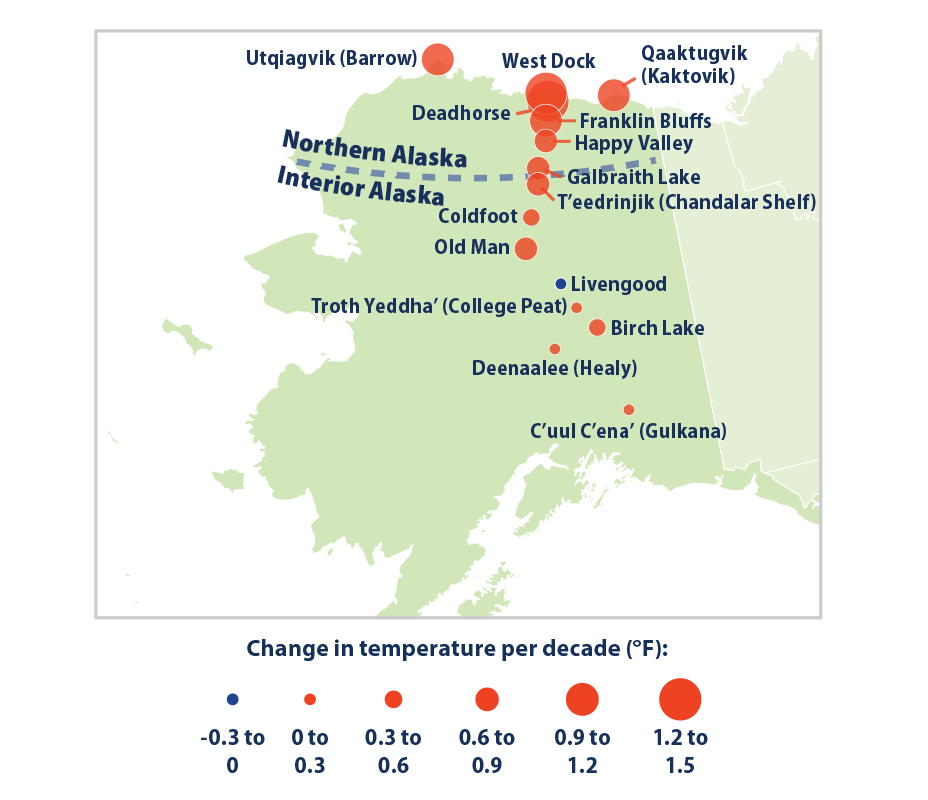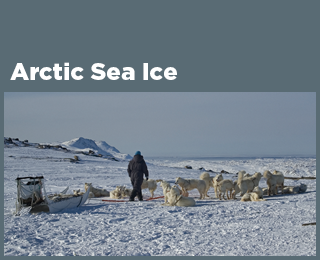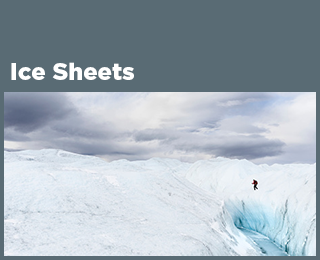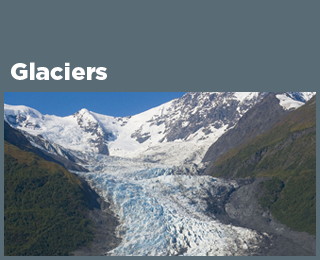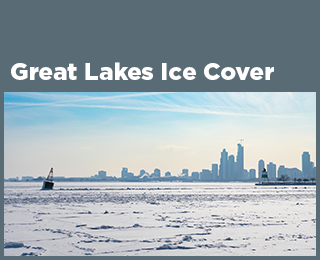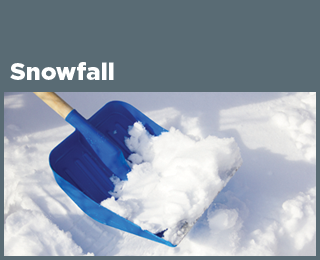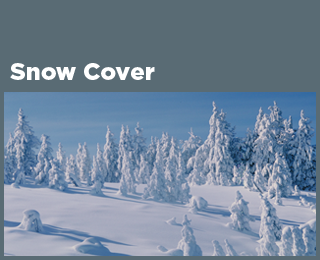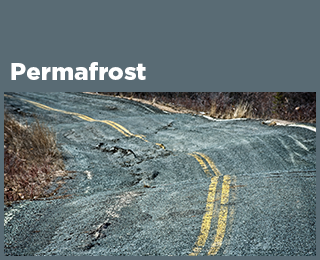Climate Change Indicators: Permafrost
This indicator shows trends in permafrost temperature at select sites in Alaska.
Key Points
- Between 1978 and 2023, permafrost temperatures increased at 14 of the 15 borehole sites shown in this indicator (see Figures 1 and 2). Warming was statistically significant at all 14 of the boreholes that had increases.
- In general, permafrost has warmed more quickly in northern Alaska than interior Alaska (see Figure 2). The increasing rate of change in the north is consistent with changes in air temperatures, which have increased more quickly in northern Alaska than in other parts of the state4 (see Figure 3 of EPA’s U.S. and Global Temperature indicator).
- The Deadhorse site in northern Alaska had the highest rate of temperature change, at +1.5°F per decade. The Livengood site in interior Alaska was the only site to get cooler over the period of record, though only slightly. Overall, permafrost temperatures have increased at an average rate of 0.6°F per decade.
- Changes in permafrost temperature shown in this indicator are consistent with changes observed in Russia, Canada, and other parts of the Arctic.1
Background
Permafrost is defined as rock or soil that remains at or below the freezing point of 32°F for two or more years. Permafrost usually lies below an “active layer” of ground that freezes and thaws every year with seasonal changes in temperature.1 Permafrost occurs in many different forms with various amounts of ice (continuous and discontinuous) and is mainly found in areas near the Arctic. In Alaska, about 80 percent of the ground has permafrost underneath it.2 A key characteristic affecting the state of permafrost is the temperature at the ground surface and shallow depths. The seasonal timing, amount, and extent of snow cover (see the Snow Cover indicator) also affect permafrost.3 A warming climate has brought higher temperatures to Alaska and other areas with permafrost, causing some permafrost to thaw. While the impacts of climate change on permafrost vary at regional and local scales, permafrost thawing has been observed in many locations around the world.
A thawing permafrost layer can lead to severe impacts on people and the environment. For instance, as ice-filled permafrost thaws, it can turn into a muddy slurry that cannot support the weight of the soil and vegetation above it. Infrastructure such as roads, buildings, and pipes could be damaged as permafrost thaws.4 Infrastructure damage and erosion, due in part to permafrost thaw, has already caused some communities in western and southern Alaska to have to relocate. Additionally, organic matter (like the remains of plants) currently frozen in the permafrost will start to decompose when the ground thaws, resulting in the emission of methane and carbon dioxide into the atmosphere. This contributes to further global climate change.1
About the Indicator
For more than 40 years, a group of scientists from the University of Alaska Fairbanks has been studying permafrost across Alaska. They measure temperature every year in 15 boreholes drilled at least 50 feet deep and analyze the data for long-term trends. This data set provides valuable information about how rapid climate changes observed in Alaska are influencing permafrost. Because permafrost temperatures can also be influenced by land use change such as urban development, agriculture, and other human activities, this indicator focuses on a select set of boreholes that are relatively remote and undisturbed for better assessment of changes associated with climate. Figure 1 shows temperature measurements for each borehole site in the interior and northern Alaska regions. Figure 2 shows the long-term rate of permafrost temperature change per decade, for all boreholes.
About the Data
Indicator Notes
Some borehole sites used in this indicator rely on data collected at depths less than 65 feet, which may be influenced by seasonal or short-term surface temperature change. Additionally, some sites were not measured every year, creating gaps of two to four years, but all the sites included in this indicator meet minimum data completeness required for long-term change calculation. Logistical issues caused minor fluctuation in the exact timing of when measurements were collected each year, which could also add some uncertainty to the results.
This collection of sites is not necessarily representative of all types of permafrost or all temperature trends throughout Alaska. Permafrost temperature can vary depending on local environmental factors such as soil type, vegetation characteristics, and snow cover depth. Notably, permafrost in northern Alaska is naturally colder and more continuous than permafrost in the interior region.
Data Sources
The data in this indicator are based on seasonal measurements collected by researchers and provided by Dr. Vladimir Romanovsky of the Permafrost Laboratory of the University of Alaska Fairbanks. Borehole temperature data are made publicly available along with corresponding metadata at: https://permafrost.gi.alaska.edu/sites_map. This data set has been used and published as part of peer-reviewed journal articles on observed changes in regional and global permafrost.
Native names for borehole sites were identified at: www.uaf.edu/anla/collections/map/names and: https://gis.data.alaska.gov/datasets/DCCED::alaska-native-place-names-1/about.
Technical Documentation
References
1 IPCC (Intergovernmental Panel on Climate Change). (2019). Summary for policymakers. In The ocean and cryosphere in a changing climate: Special report of the Intergovernmental Panel on Climate Change. Cambridge University Press. https://doi.org/10.1017/9781009157964.001
2 Osterkamp, T. E., & Jorgenson, M. T. (2009). Permafrost conditions and processes. In R. Young & L. Norby, Geological Monitoring. Geological Society of America. https://doi.org/10.1130/2009.monitoring(09)
3 AMAP (Arctic Monitoring and Assessment Programme). (2017). Snow, water, ice and permafrost in the Arctic (SWIPA) 2017. www.amap.no/documents/doc/snow-water-ice-and-permafrost-in-the-arctic-swipa-2017/1610
4 Huntington, H. P., Strawhacker, C., Falke, J., Ward, E. M., Behnken, L., Curry, T. N., Herrmann, A. C., Itchuaqiyaq, C. U., Littell, J. S., Logerwell, E. A., Meeker, D., Overbeck, J. R., Peter, D. L., Pincus, R., Quintyne, A. A., Trainor, S. F., & Yoder, S. A. (2023). Chapter 29: Alaska. In USGCRP (U.S. Global Change Research Program), Fifth National Climate Assessment. https://doi.org/10.7930/NCA5.2023.CH29
5 University of Alaska Fairbanks. (2024). Sites map. Retrieved December 11, 2024, from https://permafrost.gi.alaska.edu/sites_map

